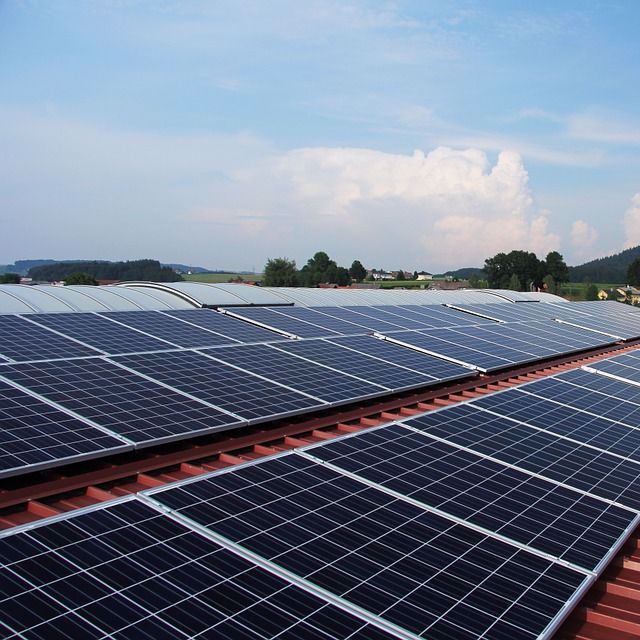
Triannual State Building Code Update Presents an Opportunity for Local Governments to Decarbonize Homes and Buildings
October 15, 2019As part of California’s effort to tackle climate change, local jurisdictions throughout the state are taking steps to reduce greenhouse gas (“GHG”) emissions from homes and buildings. Such efforts play a vital role in achieving the state’s ambitious climate goals. These goals include generating 100% carbon-free electricity by 2045, as required by SB 100; achieving economy-wide carbon neutrality by 2045, per Executive Order B-55-18; and reducing GHG emissions to 80% below 1990 levels by 2050, the goal set by Executive Order S-3-05.
California’s homes and buildings play an important role in reaching these goals, since they currently account for more than one-quarter of the state’s GHG emissions. Many of the GHG emissions generated by homes and buildings are associated with the use of natural gas for heat and to power appliances. Natural gas combustion generates CO2, while leaks in the natural gas transport infrastructure result in emissions of methane, a potent GHG. As a result, the state may achieve significant emission reductions, as required to meet its climate goals, by replacing natural gas with electricity in homes and buildings.
Reducing the use of natural gas and electrifying the building sector also provides compelling air quality, public health, and safety benefits. Natural gas combustion in buildings produces six times more nitrogen oxide pollution than the state’s power plants combined. The combustion of natural gas indoors is also associated with many indoor air quality impacts and associated negative health effects. Additionally, the natural gas infrastructure is susceptible to ruptures and fires, which are made all the more likely in the presence of seismic activity.
In response to the threats associated with the use of natural gas in homes and buildings, more than 50 California cities are exploring ways to decarbonize this sector. Local jurisdictions interested in joining the effort may use the 2019 state Building Standards Code updates as an opportunity to incentivize or require electrification of homes and buildings.
The state’s minimum building standards and regulations are contained in Title 24 of the California Code of Regulations. These standards are updated every three years, and they must be adopted and implemented by all cities and counties. The most recent edition of the state building standards was published July 1, 2019, and will become effective statewide on January 1, 2020. However, in adopting the state standards into their own ordinances and codes, local governments may also make any changes necessary to accommodate local climatic, geological, or topographical conditions. Such local modifications must be filed with the California Building Standards Commission, and many cities make their modifications in November or December prior to the January 1 effective date.
Local governments may use their authority to make local modifications to the state Building Standards Code to require that buildings be built without natural gas infrastructure. The City of Berkeley recently followed just such a path to become the first city in the nation to ban the installation of natural gas infrastructure in new homes. In July of this year, the Berkeley City Council voted unanimously to ban natural gas infrastructure in new low-rise residential buildings starting January 1, 2020. Councilwoman Kate Harrison, who sponsored the legislation, noted that natural gas makes up 27% of Berkeley’s GHG emissions and 73% of its building sector emissions. The Berkeley ordinance will thus help the city achieve its climate goals while serving as a model to other California cities and counties.
Other options for local governments seeking to encourage the electrification of building construction include using a reach code, which is a local modifications of the state’s efficiency and conservation design standards for buildings. These standards are also contained in Title 24 of the state’s Code of Regulations. In order to adopt a reach code, a local government must find that its standards are cost effective, and the California Energy Commission must find that the local standards will require buildings to consume the same or less energy than permitted under the state’s standards. Reach codes encouraging all-electric buildings have been successfully implemented by several jurisdictions, including Marin County and the City of Palo Alto. The Cities of San Jose and Menlo Park recently joined the growing movement when they adopted reach codes incentivizing all-electric buildings or requiring nearly all-electric buildings.
Electricity providers can also play a role in incentivizing electrification. For example, Silicon Valley Clean Energy (SVCE), a Community Choice Energy agency providing carbon-free electricity to twelve Santa Clara County communities, is similarly encouraging local buildings in its service territory to electrify. SVCE created an awards program to showcase existing all-electric buildings, which are those that use no natural gas or propane, and that use all-electric appliances, utilizing SVCE’s carbon-free electricity.
Local governments interested in decarbonizing their city or county’s building stock may find this year’s state Building Standards Code updates provide an especially opportune time to do so. This year the California Energy Commission has created a compliance pathway for all-electric homes, thereby facilitating the development of local building codes that incentivize or require all-electric homes. As a result of this change, the 2019 Building Standards Code adoption cycle provides a prime opportunity for cities and counties to join the decarbonization movement.
For more information, contact SMW attorney Ellison Folk.
By Ellison Folk and Lauren Tarpey
This article is intended for information purposes only and is not legal advice. This article is not intended to be a source of solicitation. This article is intended, but is not promised or guaranteed, to be correct, complete, and up-to-date. This article does not constitute a guarantee, warranty, or prediction regarding the outcome of any legal matter. Readers should not act on the information provided in this article without seeking professional legal counsel.